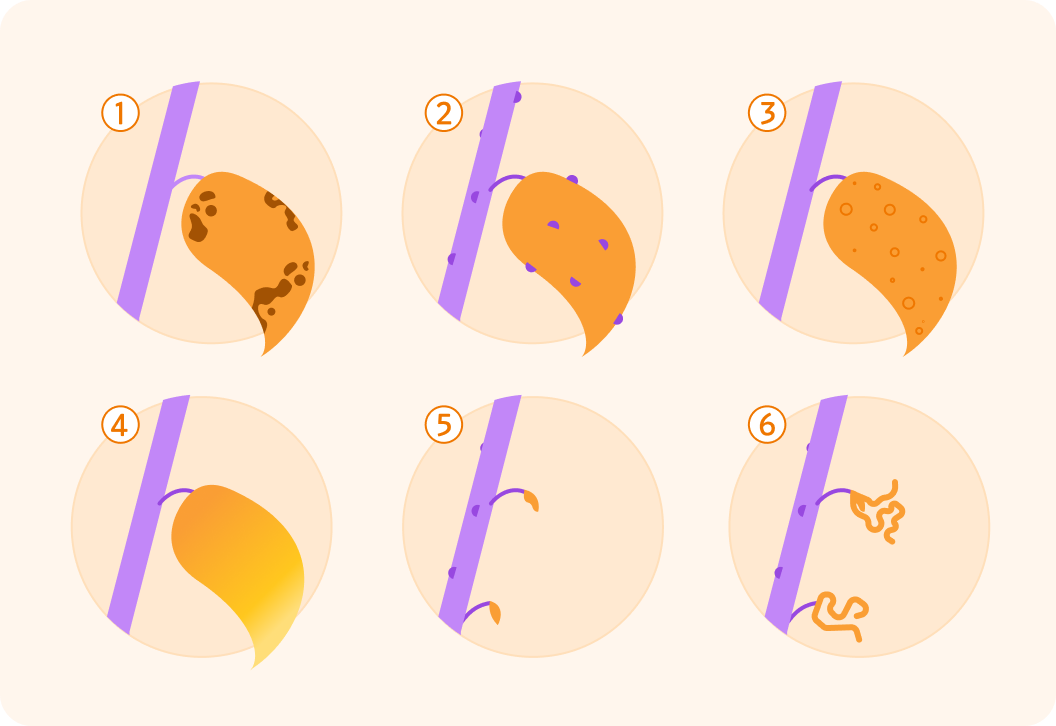YOU ARE LEARNING:
Detecting and Identifying Plant Disease

Detecting and Identifying Plant Disease
Plants have their own set of diseases, which can be passed between plants through various methods. Plants also show different symptoms of disease.
It's not just humans and other animals that get ill. Plants get diseases too. In the same way that we need vitamins and minerals to stay healthy, plant health can also be affected by different deficiencies.
Plants need nitrates from the soil to make proteins. Which of these symptoms do you think a plant will have if it lacks nitrates?

Plants can also lack magnesium. Magnesium is used in making chlorophyll, which is the pigment plants use in photosynthesis. A lack of magnesium results in chlorosis. What symptom will the plant show?

Plants don't just get ill from deficiencies. They can also get diseases. Which of these do you think can cause disease in a plant?

You can select multiple answers
Which of these shows malformed leaves? Answer 1, 2, 3, 4, 5 or 6.


Which of these shows patches of decay? Answer 1, 2, 3, 4, 5 or 6.


What does image 3 show?
A) Rot B) Spots on leaves C) Discolouration
Answer A, B or C.


Which of these shows discolouration? Answer 1, 2, 3, 4, 5 or 6.


What does image 5 show?
A) Malformed leaves B) Decay C) Stunted growth
Answer A, B or C.


Which of these shows abnormal growths? Answer 1, 2, 3, 4, 5 or 6.


So plants can display a range of symptoms and signs of diseases, for example...
Stunted growth...
where plants don't grow as tall, or leaves may not be as big as expected.
Abnormal growths...
such as lumps or bumps.
Malformed leaves or stems...
in unexpected shapes and sizes.
Spots on leaves...
which often appear brown on green leaves.
Discolouration...
like a yellow leaf instead of green.
Patches of decay...
which we also call "rot".
Aphids are pests to plants. They don't cause disease, but they can damage them. What is an aphid?

Plant diseases can be worrying for gardeners and farmers. If plant growth is disrupted, this can reduce the yield, and the farmer will make less money. There are a few ways plant diseases can be identified, which can help to quickly find a cure.
If a gardener or farmer wants to find out what is wrong with his plant, he can do a few different things.
Consult existing literature
This just means that he looks up the symptoms in a gardening book or search on a website.
Take the plant or cuttings of the infected part of the plant to a garden centre or a laboratory.
Specialists will be able identify the disease either by looking at it or by running tests.
Use a test kit to identify the pathogen that is causing the plant's disease.
These test kits make use of monoclonal antibodies.
